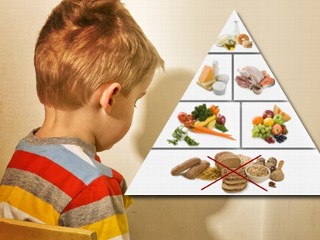Diet
The role of healthy & balance diet for of proper growth & development of a child is well known.
All parents want to ensure that their children are getting the nutrients they need. However getting kids to eat healthy meals is not always an easy task. For parents who have children with Autism, they face a unique set of challenges in terms of food aversions & habitual eating behaviors.
It’ is not uncommon for a child to be a picky eater & this can be especially true for childerns with Autism. childrens with austism spectrum disorder typically repeat their behaviors & have narrow, obsessive interests
These type of behaviors not only a help your kids in day to day life, but they can also bleed over in to eating habits & food selection / choices. This can make mealtimes difficults, leaving some parents frustrated & unsure of what to do to help their childrens.
First, a child with Autism may not just be sensitive to the taste of a particular food also the color, smell or texture. Also, if you have a child with Autism you already know how important routines & rituals are for your children. This can make it difficult to introduce new foods to your child, The way a food
If you are Frustrated or stressed over your child’s current nutritional food intakes. It is important to focus on how meals & snacks are delivered. Making mealtime fun & engaging playing off your children’s own specific preferences, is a great place to start!

Feels in your child’s mouth can affect whether they like or dislike the food, or cause your child to adapt ritualistic eating habits like making sure no food touch win the same plate at every meal,ensuring that a particular food is place on the same part of a plate of other. This hypersensitivity to texture can make it difficult to find food that The satisfy a diet for children with Autism while providing nutritional value
Tips for Improving
1) Make Recipes Together
2) Take small steps – If you force your child to eat a new food it will only escalate the battle. Be calm & take small steps. This can include having your child lost at smell, & even just lick foods before putting a whole bite in their mouth.
3)Offer choices – allow them to when choose one of their favorite foods to include at every meal even if its a condiment.
Ayurveda emphasize the importance of Satvik Ahara
Food plays a crucial role both in healthy & diseased conditions. A healthy life starts with healthy & natural food. In Ayurveda, Ahara comes under one of the three supporting pillars of life one should take food only depending on his digestive Fire, In Ayurveda, six Ritus (seasons) have been detailed & specific dietory & life styles, regimens are also well explained. There is a great inter connection between ahara, gut microbiome & seasons. In Ayurveda, food supports & brings out the three qualities of mind namely, Satvik (Quality of purity & harmony) Rajasika (Quality of passion & manipulation) & Tamasika (Rajo) (Darkness, and destruction). Satvik diet is best for maintaining health, good mind, physical strength & longevity & also helps in calming & purifying mind.
A satvik diet shares the qualities of satva, some of which include pure, essential, natural, vital energy containing, clean, conscious, true, honest wise’
A Satvik diet can also exemplity Ahimsa, the principle of not causing harm to other living beings.
In the mangments of the manovyadhi Satvik Ahara utimately increases the sattva guna
Satvik foods means-
– Freshly prepared food which is not too spicy, too hot, Sour or too cold.
– Whole grains
– Fresh vegetables
– Fresh Fruits
– Dry Fruit
– All the legames of pulse
– Ash gaurd ( Petha/ kohala)
Used the following for preparing foods.
1 ) Jowar Roti, Rice, Brown rice, Buckwheat flour, corn flour, Garbanzo bean flour, cercal, Herring, Upama, kheer, porridge, goat milk, ghee.
2) Vegetables:-
Cauliflower, Cucumber, mashrooms, radish, eggplant, spinach, broccori, Potato, Corn, Cabbage, kale, Brussels sprouts, bok choy, arugula, collard greens, mustard green, turnip greens, water cress, Beet Root, carrot, pumpkin, Soy beans, Rayma, moong Masoor, yellow splits peas, common beans. Lentils, green leafy vegetables, zucchini, Asparagus, sweet potato, olive, Safflower Sunflower, Ash gaurd (Peth/kohala), green chilly.
3) Oils: –
Sun floor oil, sesame oil, coconut oil, Flax oil, Red palm oil, olive oil.
4) Fruits:-
Apples, avocados, blueberries, kivi, grapes, plums,
strawberries, banana, orange, lemons, papaya, pine apple, water melon, mango, coconut, chiku, Albakara, custard apple, pomegranate, guawa.
4) Dry Fruits:-
Almonds, Dates, Walnuts, pistachios, Peanuts prumer, cashew nuts, Apricots, avacado, pista, raisins.
5) Seeds :-
Pumpkin seed, chia seeds, sunfloor seeds, flax seeds, Soybeans, hemp seeds, sesame seeds
6) Non Vegeterians:-
Eggs, Legumes, fish, fattyfish, meat, chicken, Egg yolks
Food to be Avoids-
To reduce the Hyperactivity, Rajo guna Should be minimised, for that –
– Avoid acidic Food
– Avoid Red chill
– Avoid Fried Items.
– Avoid Junk food
– Avoid processed food
– Avoids fermented food.
Say No to –
1) Dairy Products-
Buffalo milk, Curd, Butter, Paneer, Cheese – Junnu, Lassi With Sugar, Icecream, Yogurt
2) Processed Food & Bakery –
Pastries, Pizza, Burges, Vinegar, Fried Food, Chinese food, Soft Bread, Dry Bread, Cakes, Processed Food Like Kurkure, Chips, Maida, Oats, Macaroni
3) Packed Drinks-
Tinned / Canned Juices, Flavoured Drink, Energy Drinks, Soda, Glucose Water, Syrups, Sauces, Ketchups, Caffieine
4) Coloured Food likes –
Sugar, Jams, Candies, Sweets, Gems, Chocolates, Jellies
Avoid processed or prepacked meat.
Avoid Barley, Macaroni wheat, Oats, Maida
Food Sensitivities/Allergens:-
Many children suffering from ASD are allergic to several food items, the top Seven allergens are soy, wheat, conventional Jais, peanuts, tree nuts, eggs & shellfish

